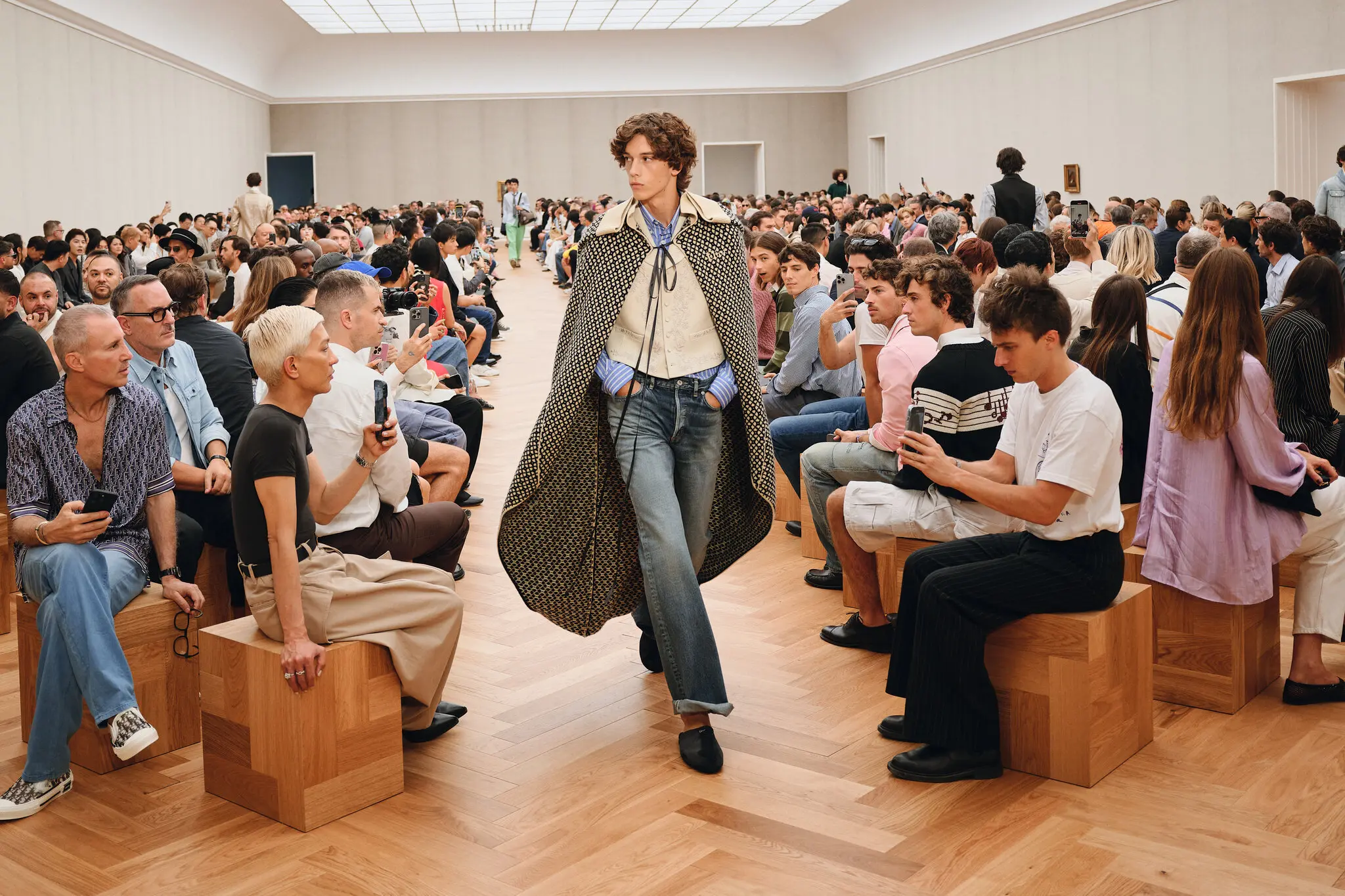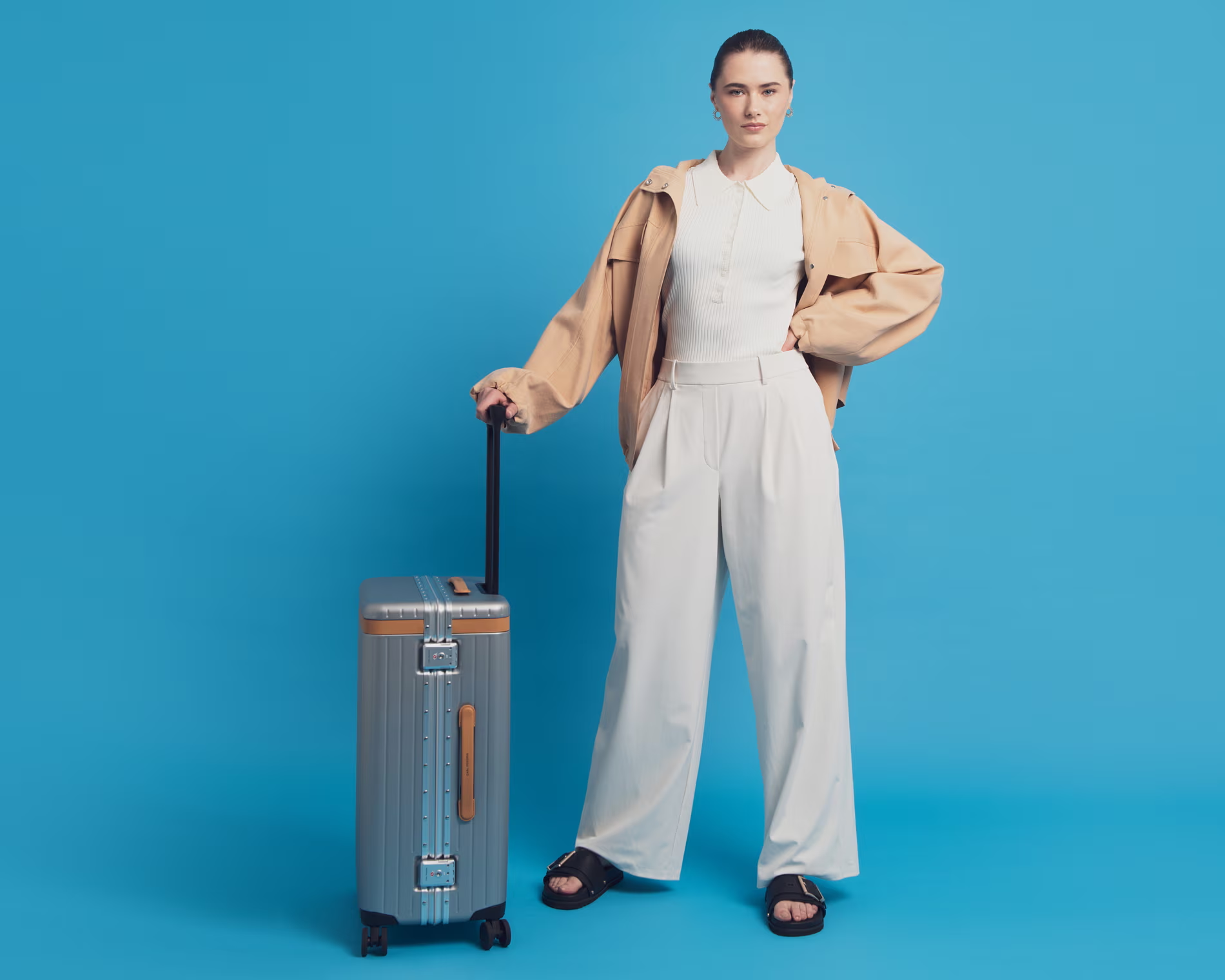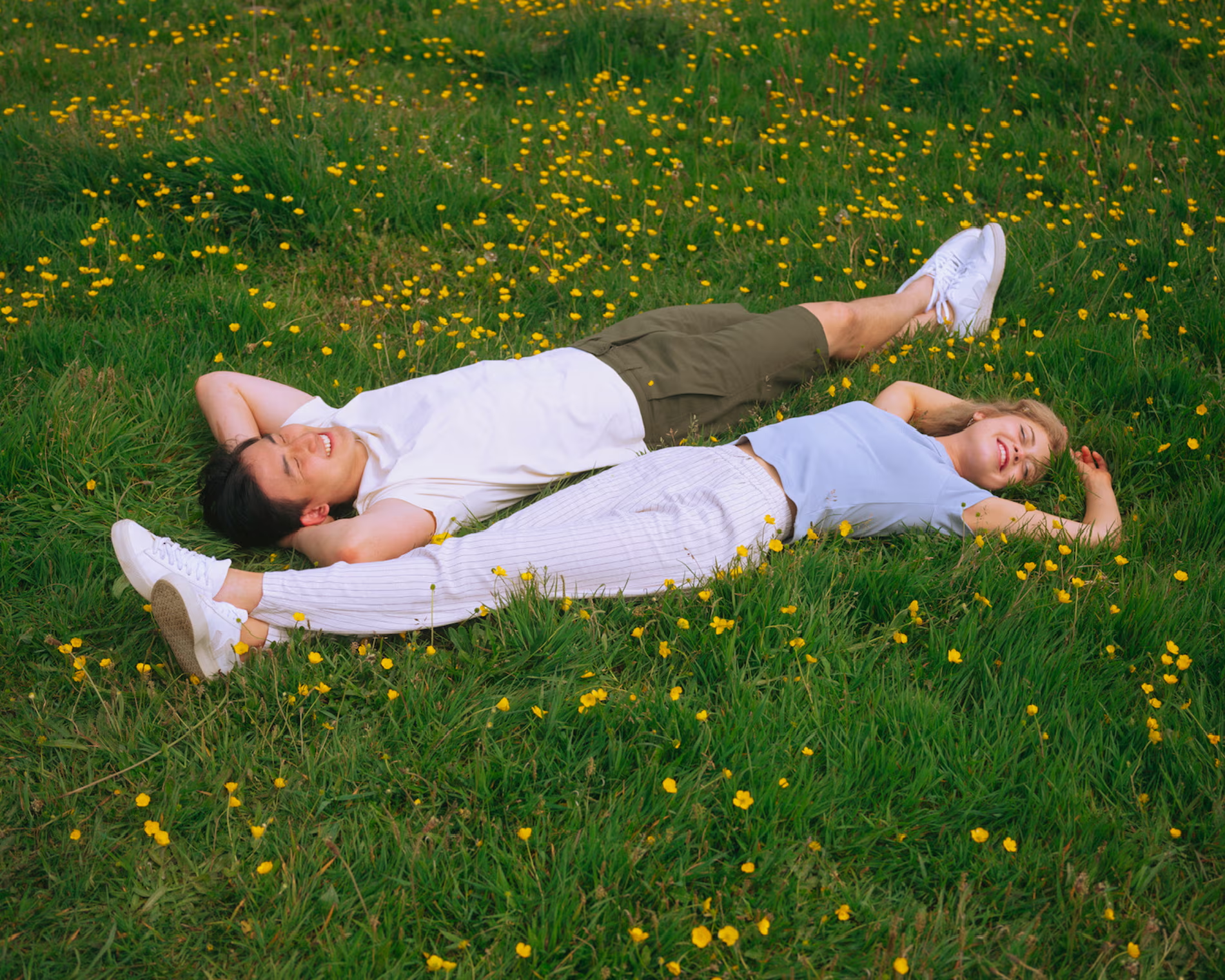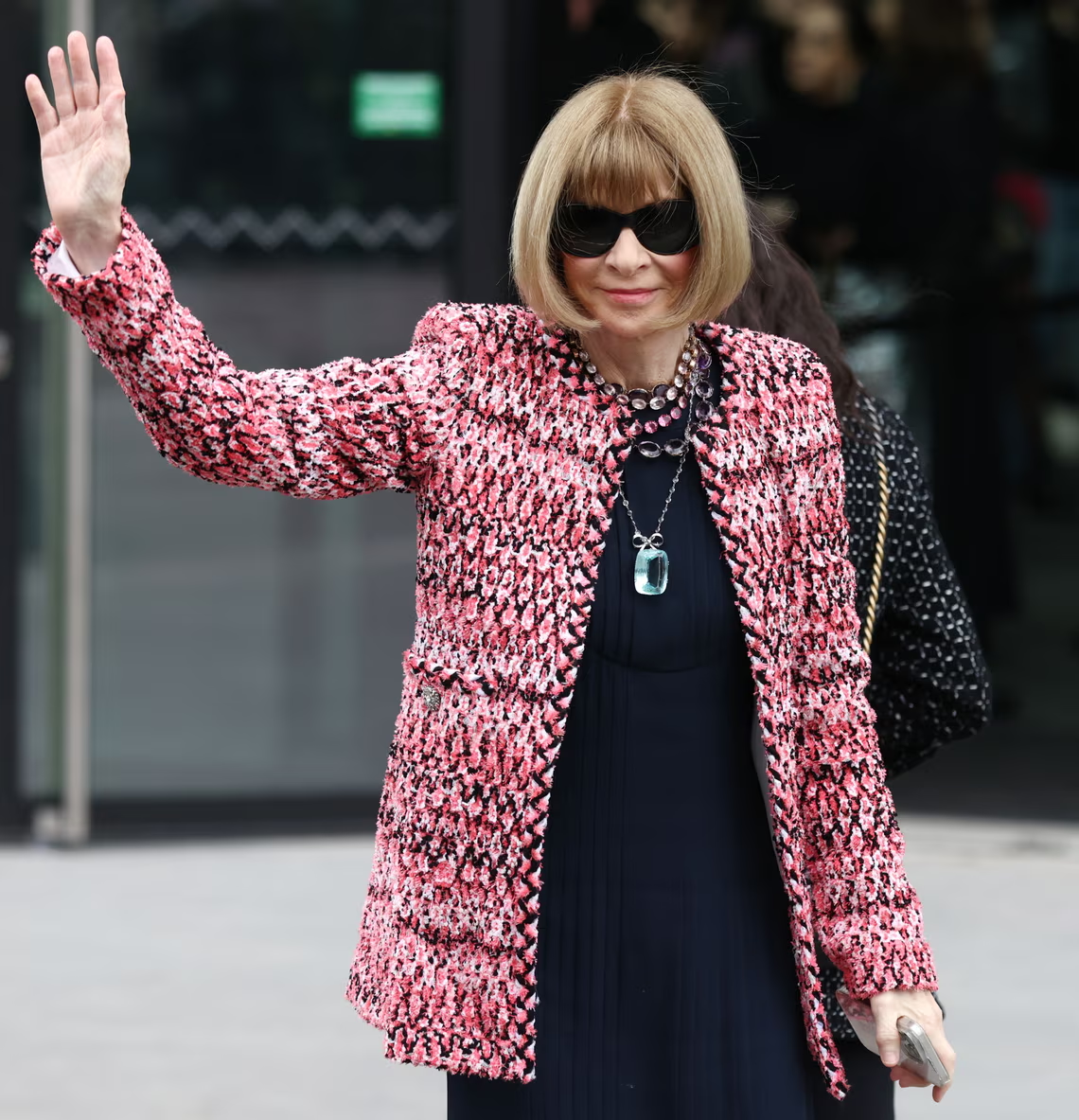A photo of Christian Dior’s original salon stretched the width of the Invalides, the gold-domed palace where Napoleon is buried, offering a fish-eye view of the past to the throngs shrieking outside — and a sign of just where Dior believes it belongs in the pantheon of French power.
Inside, dove-gray velvet lined the walls of a temporary event space and displayed two rare 18th-century oils by Jean Siméon Chardin on loan from the National Galleries of Scotland and the Louvre. Robert Pattinson gossiped with Josh O’Connor. Donatella Versace schmoozed with Roger Federer. A pregnant Rihanna arrived with ASAP Rocky a mere 45 minutes after the official start time.
That’s how much anticipation there was for the Dior men’s show. The filmmaker Luca Guadagnino was even trailing around to document the moment.
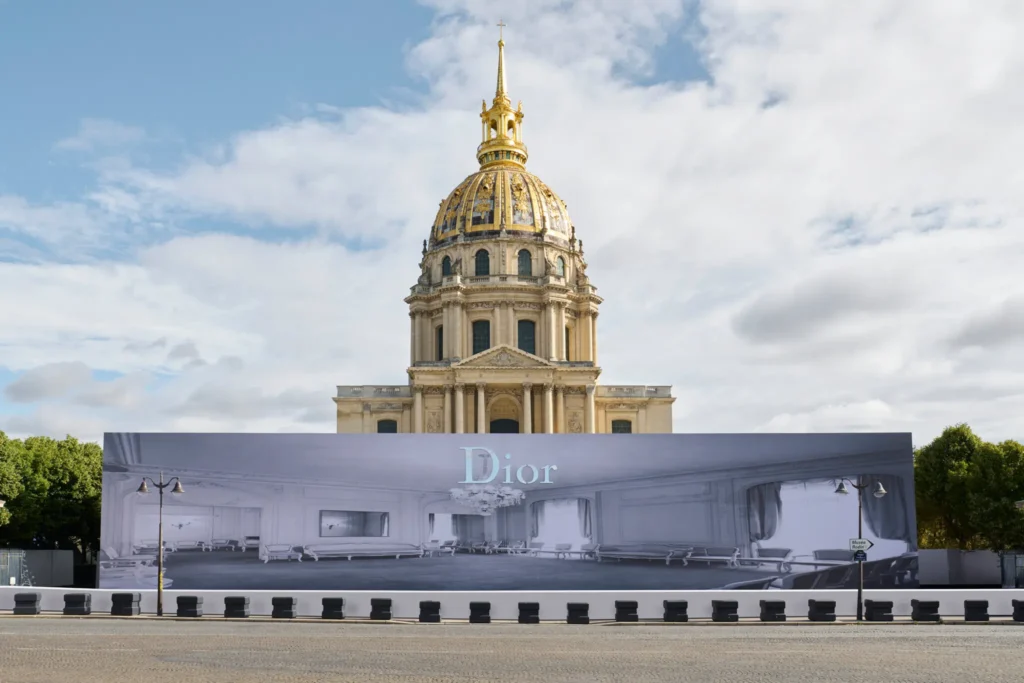
It was Jonathan Anderson’s debut as the creative director/savior of the house, the first designer to be put in charge of both men’s and women’s wear. And under all the buzz, a giant question mark hovered: Could the former Loewe wunderkind reignite excitement not just in the brand but in fashion?
Mr. Anderson made it look easy. Literally.
Beginning with his take on the Bar jacket, the most famous Dior women’s wear shape — the one that prompted the Harper’s Bazaar editor Carmel Snow to jump out of her seat shrieking, “It’s a New Look!” in 1947. It was reimagined in a Donegal tweed with a flat back and a whiff of the hourglass at the front, as if it retained a vague memory of what it once was.
With it, he paired not a shirt but a stiff white stock collar and a pair of oversize white cotton cargo shorts, each side sporting elaborate folds to create the plumped out silhouette of a goose, or a 1948 couture dress called the Delft. Go on, shake your tail feathers.
If little Lord Fauntleroy had spent a year at U.S.C. and then returned for a pickup game of basketball at Versailles, this is how he might dress. It was not a capital N New Look. It wasn’t that radical, or shocking. But it was an awfully charming newish one.
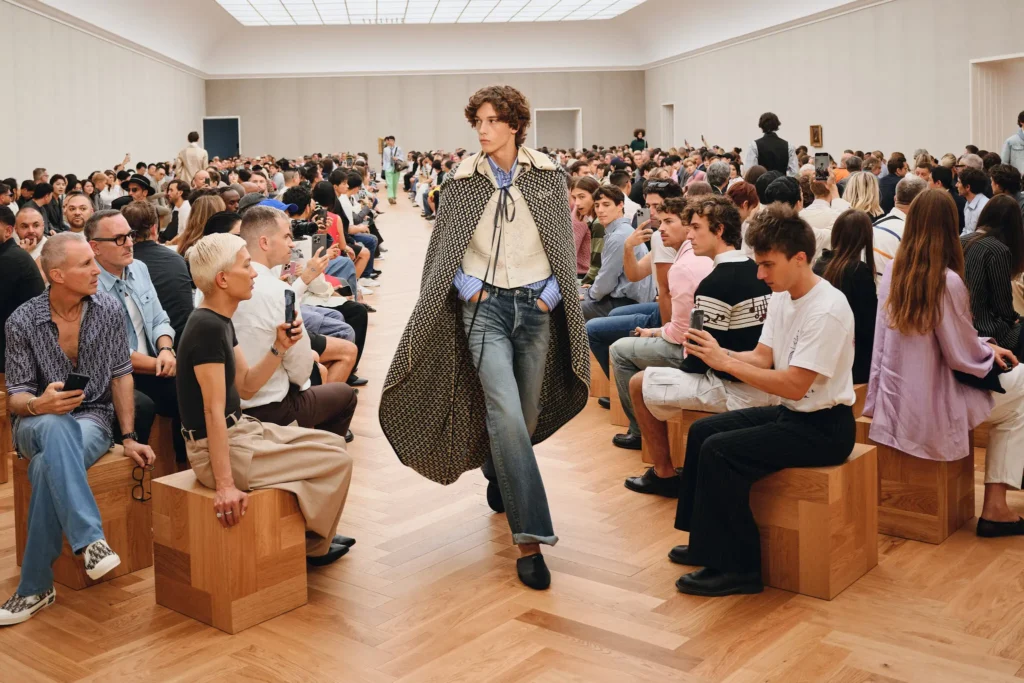
And it was situated smack in the middle of the tension between formality and informality, men’s wear and women’s wear, commerce and creativity (Mr. Anderson’s own work at Loewe and Uniqlo and what he inherited at Dior), which seems to define this particular moment.
No one is all one thing or another. Neither are their clothes. Neither are the totems of wealth. What Mr. Anderson proposed was a clear and convincing argument that contradictions can gracefully coexist. Most of all, he put forward the belief that fashion and wearability are not irreconcilable ideas — that you either have to look bizarro or look boring.
For every highfalutin garment there was an equal and opposite this-old-thing, usually worn together. Velvet frock coats were paired with faded jeans in Japanese denim. Olive green puffer coats and down vests were cut with trapeze backs. The exact pattern of another classic Dior dress, the Caprice, with its elaborately swathed peplum skirt, was applied to a pair of loose khakis, giving one leg the fillip of a drape. An 18th-century frock coat was exactingly reproduced — in moleskin.
There were shamrocks on tennis shoes and high-tops with driving shoe soles; cable knits under elaborate waist coats. There was a lot of neck action. Book totes borrowed, again, from the women’s line, with actual book titles on them from Baudelaire and Françoise Sagan.

